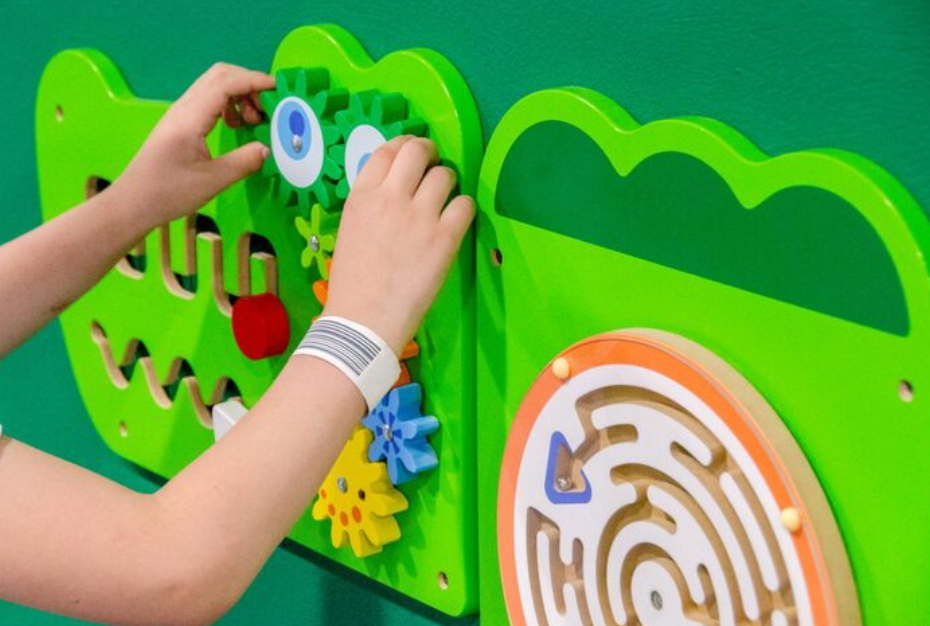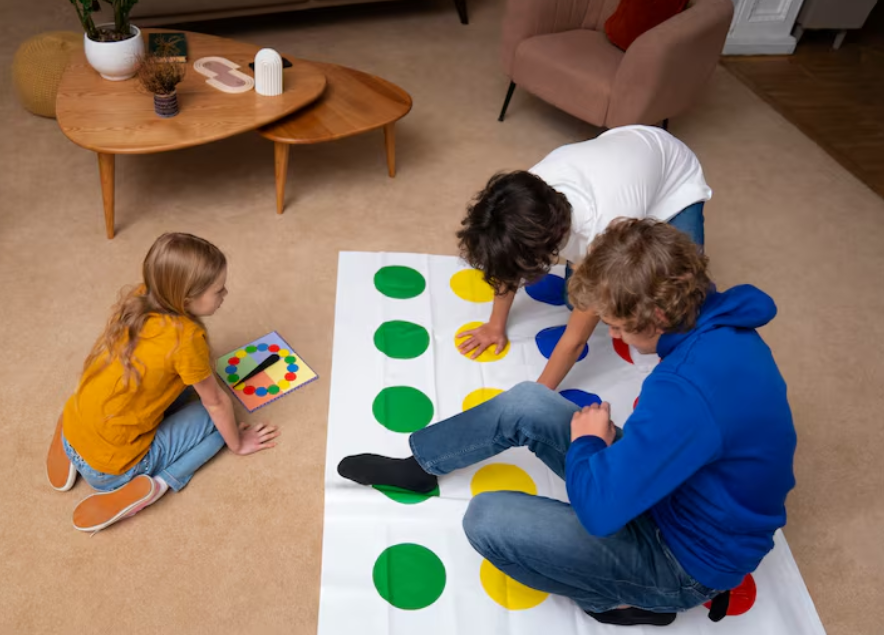Exploring Sensory Integration Education and Support Options

You may ask how to find good help for your child or others with sensory processing needs. Many families, caregivers, and professionals can use programs and support made for people with sensory challenges. Studies show that about 90% of children with autism have sensory processing issues. Sensory processing disorder affects up to 16% of all children. Children who get sensory integration support often have better social skills. They also become more independent and do daily tasks better. You can look at a sensory website, join local programs, and find tools that help.
Key Takeaways
Learning about sensory integration helps kids learn and react better. It helps organize sensory information for easier daily life.
Sensory integration therapy can help kids with social skills. It can also help with motor skills and emotional control in kids who have sensory processing challenges.
Parents and teachers can learn from training programs. These programs teach good sensory strategies. They help parents and teachers support kids at home and at school.
Making sensory-friendly spaces at home helps kids feel safe and calm. Use calming tools and activities to help meet their needs.
Having a strong support group with experts and other families gives helpful resources. It also gives emotional support for handling sensory challenges.
Sensory Integration Basics

What Is Sensory Integration
Sensory integration is how your brain uses information from your senses. You use sight, sound, touch, taste, smell, and movement to learn about your world. When your brain handles these senses well, you can learn and react easily. Dr. A. Jean Ayres was a leader in occupational therapy. She said sensory integration is the organization of an individual's senses for use. This process helps you move, learn, and respond to things around you.
Source | Definition |
|---|---|
A. Jean Ayres | Sensory integration is the organization of an individual's senses for use. The brain’s ability to organize sensations supports a person in moving, learning, and reacting to situations appropriately. |
Sensory integration theory helps people understand behaviors. It also helps plan ways to support children who have trouble with sensory input. The theory can predict how children might change with the right support.
Your brain uses neuroplasticity to learn from sensory experiences. Brain parts like the parietal cortex, cerebellum, and thalamus work together to process senses. When you do sensory activities, your brain builds stronger connections. This helps you focus, plan movements, and control your actions.
Why It Matters
When sensory integration works well, you can focus, play, and learn easily. If your brain has trouble with sensory information, you might feel stressed by normal things. Loud noises, bright lights, or certain textures can bother you. Some children cover their ears, refuse some clothes, or have meltdowns during changes.
Skill Area | Benefit | Impact on Daily Life |
|---|---|---|
Cognitive Skills | Promotes better engagement in learning and tasks | |
Motor Skills | Improves movement and coordination | Supports dressing, eating, and writing |
Social Skills | Encourages positive interactions and coping strategies | Helps children build friendships |
Children with sensory processing challenges may have uneven schoolwork. They might have trouble following directions or react strongly to touch and sound. Research shows sensory integration therapy can help children manage feelings, improve motor skills, and feel more confident. When you learn about sensory integration, you can help children at home, in school, and in the community.
Education and Learning Options
Professional Training Programs
There are many training programs for learning about sensory integration. These programs help you understand sensory needs and use sensory activities at work. You can pick classes that fit your schedule. Some programs are for occupational therapy. Others are for teachers, parents, or mental health workers.
Here is a table with some well-known training programs from around the world:
Program Name | Audience | Key Features | Accreditation |
|---|---|---|---|
ASI Wise | Occupational therapists, physiotherapists, speech and language therapists | Evidence-based training, flexible certification options, global recognition | ICE-ASI |
USC Chan Division | Licensed occupational therapists | Hybrid program, expert-led instruction | ACOTE, NBCOT |
STAR Institute | Educators, OTs, mental health professionals | Intensive training, CEU-approved modules | AOTA, ASHA |
PESI | OTs, psychologists, social workers | Trauma-informed approach, practical tools | NBCC, APA, NASW |
Sensory Integration Education (UK) | Teachers, OTs, SLPs | Comprehensive curriculum, mentorship support | Sheffield Hallam University |
Future Horizons | Teachers, parents, OTs | Evidence-based strategies, expert instruction | AOTA |
CEU-Hub | OTs, OTAs | Subscription-based access, wide range of topics | AOTA, NBCOT |
NACD | Educators, caregivers | Holistic brain-based sensory support | Accredited programs |
You can join workshops, short classes, or college programs. ASI Wise gives global certification in Ayres Sensory Integration. The STAR Institute has special training for people who help children with sensory needs. The University of Southern California Chan Division has a hybrid program for licensed occupational therapists. These programs help you learn strong skills and use helpful tools at work.
To get into these programs, you may need to show you have good observation and thinking skills. You might also need a background check and to show you speak English well. These steps make sure you are ready to learn and help others.
Sensory Inclusion Facilitator Certificate
You can keep learning by getting a Sensory Inclusion Facilitator Certificate. This certificate helps you learn about sensory processing and how to use sensory-friendly ideas where you work. Sensory Integration Education offers this certificate. You will learn how to help people with sensory needs and make safe, welcoming spaces.
This certificate can help you become a leader at your school, clinic, or in your community. You will learn to plan sensory activities and use online workshops to build your skills. Many people with this certificate teach others and make a big difference.
Parent and Staff Education
Parents and staff are important for helping children with sensory needs. Parent and staff education programs give you support and learning to help children do well. Many programs have coaching sessions led by occupational therapy experts. These sessions focus on your child’s sensory needs and show you how to use sensory activities at home and school.
You can join workshops to learn how to make sensory-friendly spaces. Some schools have calming rooms where students can take breaks from too much sensory input. You can work with therapists to make recovery plans for your child. These plans help you use the same strategies at home and school.
Research shows that when parents and staff keep learning, children do better. Early help at home makes children feel more comfortable and sure of themselves. Changing routines, like giving more time for dressing, can lower stress for you and your child. Studies show that learning about sensory needs helps you feel more confident and helps your child respond better.
Tip: Keep learning by joining online workshops and talking with other parents and professionals. You will find new ways to help your child grow and feel good.
Ongoing education helps you learn the newest research and ideas. You can use what you learn to plan sensory activities, make sensory-friendly spaces, and help children in all parts of their lives. Workshops, webinars, and short classes give you tools you can use every day.
Sensory Integration Therapy

Therapy for Children with Autism
Sensory integration therapy helps children with autism who have trouble with sensory input. Many children with autism find touch, movement, and body awareness hard. This therapy uses play activities to help children respond better to sounds, sights, and textures. Occupational therapists pick activities that fit each child’s needs.
Ayres Sensory Integration focuses on three main sensory systems. These are tactile, vestibular, and proprioceptive. Therapists use games and movement to help children process sensory information. The table below explains how Ayres Sensory Integration works in therapy:
Aspect | Description |
|---|---|
Definition | Ayres Sensory Integration is a therapeutic approach aimed at improving sensory processing in children, particularly those with autism. |
Application in Therapy | Play-based activities designed by occupational therapists to enhance sensory processing and facilitate better responses to sensory inputs. |
Focus Areas | Tactile, vestibular, and proprioceptive sensory systems. |
Goals of Therapy | 1. Improve sensory processing 2. Enhance motor skills 3. Reduce sensory-related behaviors 4. Promote emotional regulation |
Effectiveness | Some studies show improvements in motor skills and daily functioning, but more research is needed. |
Relevance | About 90% to 95% of children with autism experience sensory processing issues, making this therapy very important. |
Sensory integration therapy helps children with autism talk, make friends, and do daily tasks. Research shows children who get this therapy focus better in class. They feel less upset and behave better. You may see your child pay attention longer and move better after regular sessions.
Tip: Sensory integration therapy works best when you use activities your child likes. Play-based therapy keeps children interested and helps them learn new skills.
Occupational Therapy Approaches
Occupational therapists use different ways in sensory integration therapy. Therapists help children stay calm or alert with sensory modulation. Sensory discrimination helps children tell sounds, textures, and movements apart. Praxis activities teach children how to plan and do movements.
Here are some common occupational therapy approaches:
Sensory modulation: Helps children feel calm or alert.
Sensory discrimination: Lets children notice different sensory inputs.
Praxis: Teaches planning and doing movements.
Vestibular activities: Swinging, bouncing, and spinning help balance.
Tactile stimulation: Brushing and textured materials encourage exploring.
Proprioceptive inputs: Weighted vests and resistance exercises build body awareness.
Auditory and visual tasks: Sound filtering and visual tracking help with processing.
Occupational therapists make treatment plans for each child. Sensory integration therapy uses many activities to help children handle sensory input. Therapists use sensory gyms with swings, slides, and tactile boards. Weighted vests and sensory toys help children feel calm.
Occupational therapy is different from other models. Therapists use sensory diets and integration techniques for each child. Other therapies, like ABA, use behavior changes. Occupational therapy looks at the whole child and picks activities for their sensory needs.
Note: Children like therapy more when it feels like play. Therapists use games and movement to help children build sensory skills. Adults may use practical ideas, like making a sensory diet for daily life.
At-Home Sensory Strategies
You can use sensory integration therapy at home to help your child. Occupational therapists suggest calming tools like weighted vests, compression clothes, and sensory toys. You can make sensory-friendly spaces with soft lights and quiet corners. Heavy work, like pushing or pulling, helps children feel steady.
Try these at-home sensory strategies:
Use weighted vests or compression clothes for calming.
Make quiet corners with soft lights for sensory breaks.
Add heavy work like pushing, pulling, climbing, or jumping.
Include sensory play with messy play or squishy toys.
Use a sensory diet with planned activities each day.
Give sensory breaks during schoolwork to avoid overload.
Keep your home neat and control lights and noise.
Research shows home sensory integration therapy helps children with autism care for themselves and make friends. Studies report better daily skills and social abilities. You can make sensory diets and use hands-on ideas every day. Routines and active help make therapy work better.
Callout: Make sensory spaces at home for your child’s needs. Use sensory tools and activities to create a safe and fun place. A good sensory area helps your child feel comfortable and supports sensory integration.
Sensory integration therapy works best when you pick activities for your child’s sensory needs. Play-based settings and the “just right” challenge keep children trying. You help your child become independent and control their actions by using these ideas at home.
Finding Support and Resources
Community and School Resources
You can get help for sensory integration at school and in your town. Movement activities help kids focus better in class. Occupational therapy uses fun activities to help kids get used to different feelings. School counselors and occupational therapists make plans for each child. Schools may change classrooms and add movement breaks for sensory needs. Small groups and one-on-one help give extra support. Other therapies, like physical therapy and speech therapy, also help kids with sensory needs. Many groups in your community have workshops and classes for families. You can join volunteer groups or go to events to learn new ideas.
Movement activities at school help with sensory integration.
School counselors and occupational therapists teach sensory strategies.
Community groups have workshops and support groups.
Special plans help kids do well in school.
Tip: Ask your school about sensory-friendly classrooms and movement breaks. These changes can help your child feel safe and ready to learn.
Sensory Website and Online Tools
A sensory website can give you tools, tips, and classes for sensory integration. Many websites have guides, reviews, and online classes. These resources help you learn about sensory processing and find the best help for your child. Some sensory websites list helpful tools, mindfulness apps, and sensory toys. Online tools use pictures, games, and settings to help kids handle too much sensory input. New technology can make learning and talking easier for kids with sensory needs.
Sensory Website | Description |
|---|---|
Sensory Toys & Solutions for an Inclusive World | Gives sensory tools for ADHD, autism, and special needs. |
Sensory Tool Gift-Guide | Shares mindfulness apps for neurodiverse kids. |
20 Therapeutic Tools to Support and Regulate Your Clients’ Nervous System | Lists tools for trauma, anxiety, and sensory overload. |
Building a Support Network
Having a strong support network helps your family feel cared for. You can join online groups, social media, or local support groups. Talking with other families, therapists, and teachers gives you advice and help. Sharing ideas and listening to others makes your network stronger. You can help others by planning group activities or giving support. Community groups and autism organizations often have volunteer spots and learning events.
Friends and family give emotional support
Professionals and sensory websites give information
Community services give practical help
Stay in touch by calls, messages, or meetings
Note: A strong support network helps you find answers and share stories. You can learn from others and help your child do well.
You can help with sensory integration in many ways. Training programs teach you new skills. Therapy helps you learn and feel confident. Online resources give you tips and ideas. Research shows sensory integration therapy helps with motor skills, emotions, attention, and social skills:
Key Area | Findings |
|---|---|
Motor Skills | Children with autism move better and use their hands more. |
Emotional Stability | Kids handle feelings and stress in a stronger way. |
Attention | Kids focus longer and join class activities more. |
Social Skills | Children make friends and connect with others better. |
Try these steps to find good support:
Watch how your child reacts to different things.
Check your home or school for things that bother your child.
Use routines and strategies that help with sensory needs.
You can use new tools like flexible seats and special technology. These help your child do well. Support is always there, and you can help every day.
FAQ
What is sensory integration therapy?
Sensory integration therapy uses play and movement to help you with sights, sounds, and touch. An occupational therapist leads you in activities that fit your needs. This therapy helps you feel calm and ready to learn.
How do I know if my child needs sensory support?
You might see your child cover their ears or avoid some textures. They may react strongly to lights or sounds. If you notice these things, talk to an occupational therapist. They can help you decide if your child needs sensory support.
Can I use sensory strategies at home?
Yes! You can make quiet spaces or use weighted blankets. You can also give your child movement breaks. Try different sensory toys and activities. > Tip: Watch your child’s reactions and pick what helps them most.
Where can I find more resources?
You can look at sensory websites or join online groups. You can also ask your school for help. Many groups give free guides and webinars. > Note: Local therapists and community centers often have workshops and support groups for families.
See Also
How Sensory Tents Aid Children Facing Sensory Processing Challenges
Exploring Support Strategies for Autism-Related Sensory Overload
Understanding Sensory Interactive Tools for Special Needs Learning
Evaluating OT Sensory Integration Therapy Against Other Treatment Methods
An In-Depth Overview of Sensory Processing Integration for Autism
